10 Common Potato Cooking Mistakes and How to Avoid Them
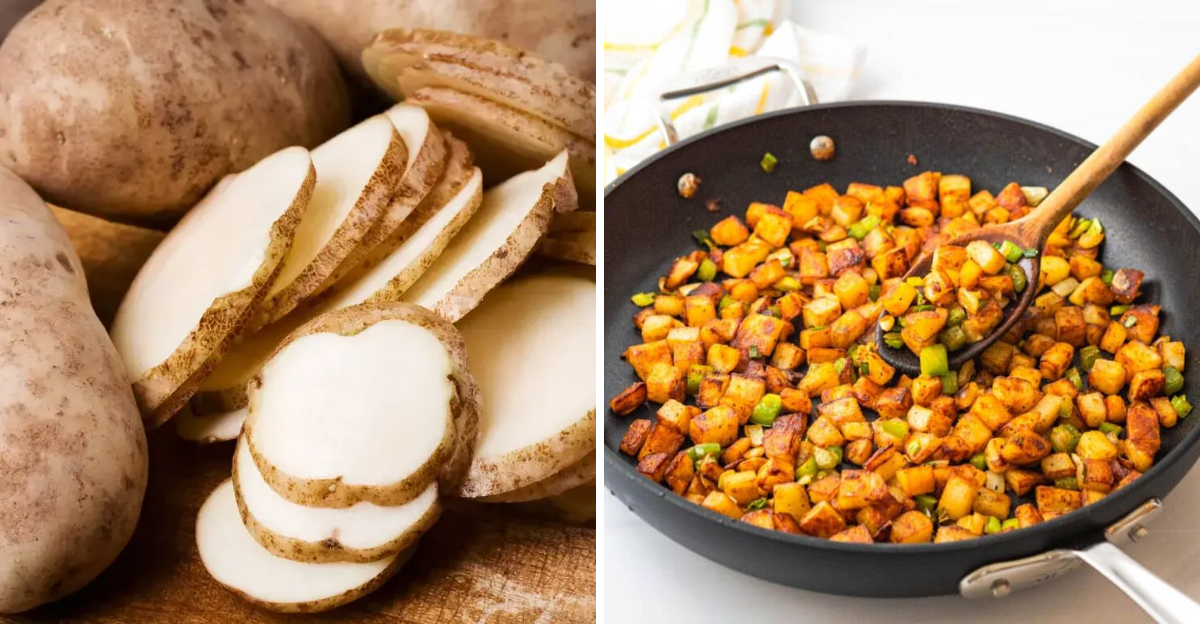
Potatoes are one of the most versatile and beneficial ingredients in kitchens worldwide, yet many home cooks make simple mistakes that can ruin their dishes. From choosing the wrong variety to overcooking, these common errors can turn a potentially delicious meal into a disappointing experience. Understanding these pitfalls and learning how to avoid them will help you cook better potato dishes. With the right techniques, you can make better meals.
1. Choosing the Wrong Potato Variety
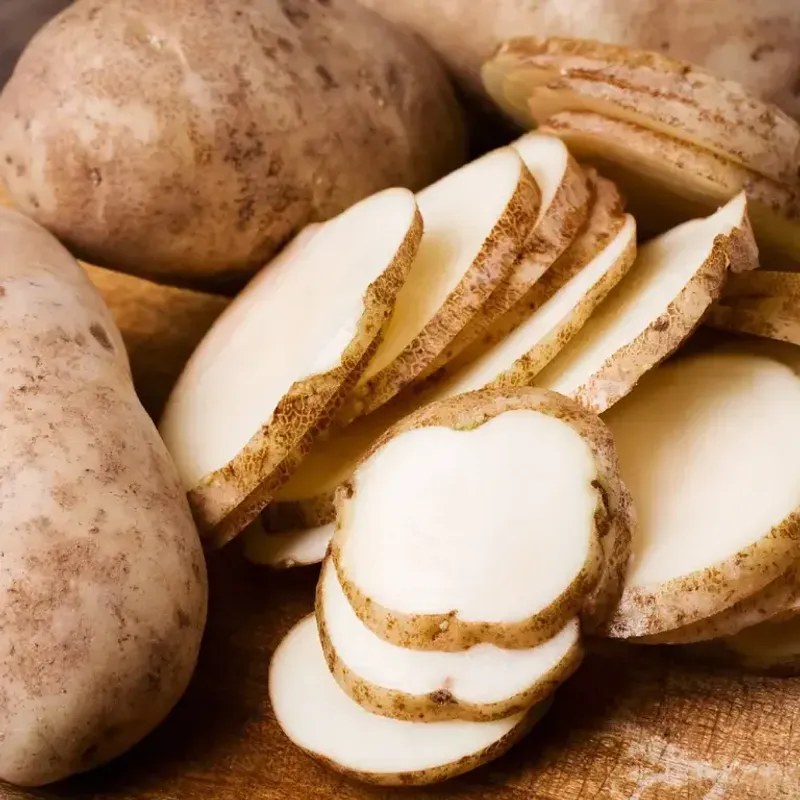
Many cooks grab any potato from the store without considering how different types behave during cooking. Russet potatoes work best for baking and mashing because their high starch content makes them fluffy. Waxy potatoes like red or fingerling varieties hold their shape well, making them ideal for boiling, roasting, or potato salads. Yukon Gold potatoes fall somewhere in between and work well for most cooking methods. Understanding these differences helps you select the right potato for your recipe. Using the wrong type can result in mushy hash browns or lumpy mashed potatoes that don’t taste as they should.
2. Skipping the Rinse Before Cooking
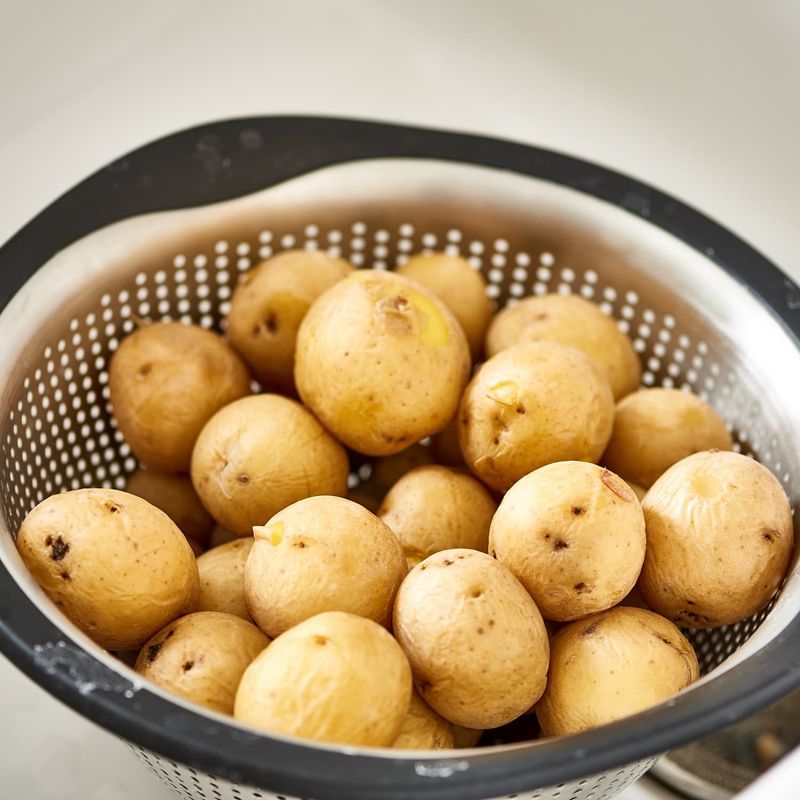
Raw potatoes often carry dirt, debris, and excess starch on their surfaces that can affect the final dish. This more starch makes potatoes stick together when cooking and can cause them to become gummy or overly thick. A quick rinse under cold running water removes surface dirt and some of this excess starch. For dishes like roasted potatoes or french fries, this step helps achieve better browning and crispiness. Even if you plan to peel your potatoes, rinsing them first prevents dirt from getting on your knife and cutting board. This simple step takes only seconds but makes a noticeable difference in the final result.
3. Overcrowding Your Cooking Pan

When too many potato pieces compete for space in a pan, they end up steaming instead of browning properly. This happens because overcrowded potatoes release moisture that can’t escape quickly enough. Steam prevents the high heat needed for browning and crisping, leaving you with pale, soft potatoes instead of golden, crispy ones. Each piece needs room for hot air or oil to circulate around it. Cook potatoes in batches if necessary, or use a larger pan to give them adequate space. The more time spent cooking in smaller batches pays off with much better texture and flavor in your finished dish.
4. Forgetting to Season Properly

Plain potatoes can taste bland and boring without proper seasoning, yet many people add salt only at the end of cooking. Seasoning early allows flavors to penetrate the potato flesh as it cooks. Salt draws out moisture and helps other seasonings stick better to the surface. Herbs like rosemary, thyme, or garlic powder add flavors that complement potatoes naturally. Season your potatoes before cooking whenever possible, and don’t be afraid to taste and adjust as you go. A well-seasoned potato dish can stand on its own or complement other foods much better than unseasoned ones.
5. Cooking for the Wrong Amount of Time

Timing mistakes happen easily with potatoes because different sizes and cooking methods require different amounts of time. Undercooked potatoes remain hard and starchy, while overcooked ones turn mushy and fall apart. Test doneness by inserting a fork or knife into the thickest part of the potato. It should slide in easily without resistance when properly cooked. Start checking smaller potatoes earlier than larger ones, and remember that cut potatoes cook faster than whole ones. Keep an eye on your potatoes during the last few minutes of cooking to catch them at just the right moment for the best texture.
6. Not Drying Potatoes After Washing
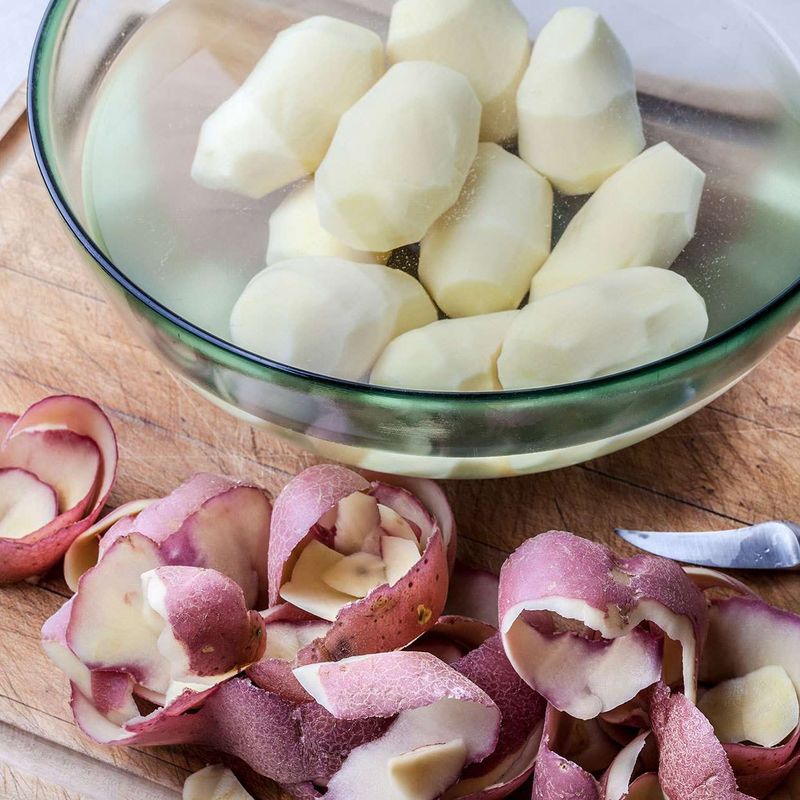
Wet potatoes don’t brown or crisp properly because the surface moisture must evaporate before browning can begin. This step slows down cooking and prevents the golden color most people want. After washing, pat potatoes completely dry with clean kitchen towels or paper towels. For cut potatoes, let them sit on towels for a few minutes to remove even more moisture. This step becomes especially important when making roasted potatoes, french fries, or hash browns. Dry potatoes will sizzle when they hit hot oil or a heated pan, while wet ones will sputter and steam instead of crisping up nicely.
7. Using Too Much Oil
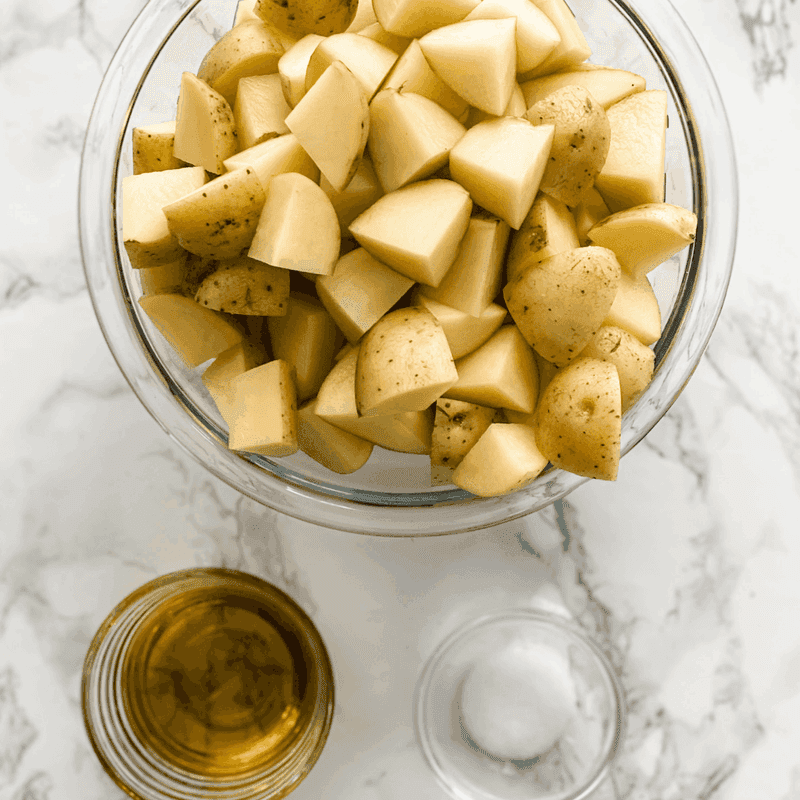
Heavy-handed oil application makes potatoes greasy and unpleasant to eat, masking their natural flavor with an oily coating. Too much oil also prevents proper browning because it adds a barrier between the potato and the heat source. Use just enough oil to lightly coat the potato surfaces. For roasted potatoes, toss them in a bowl with oil until they’re evenly coated but not dripping. A light coating allows heat to reach the potato surface directly while still providing enough fat for browning and flavor. This technique results in crispy outsides and fluffy insides without the greasy texture that comes from using excessive amounts of oil.
8. Starting with Cold Equipment
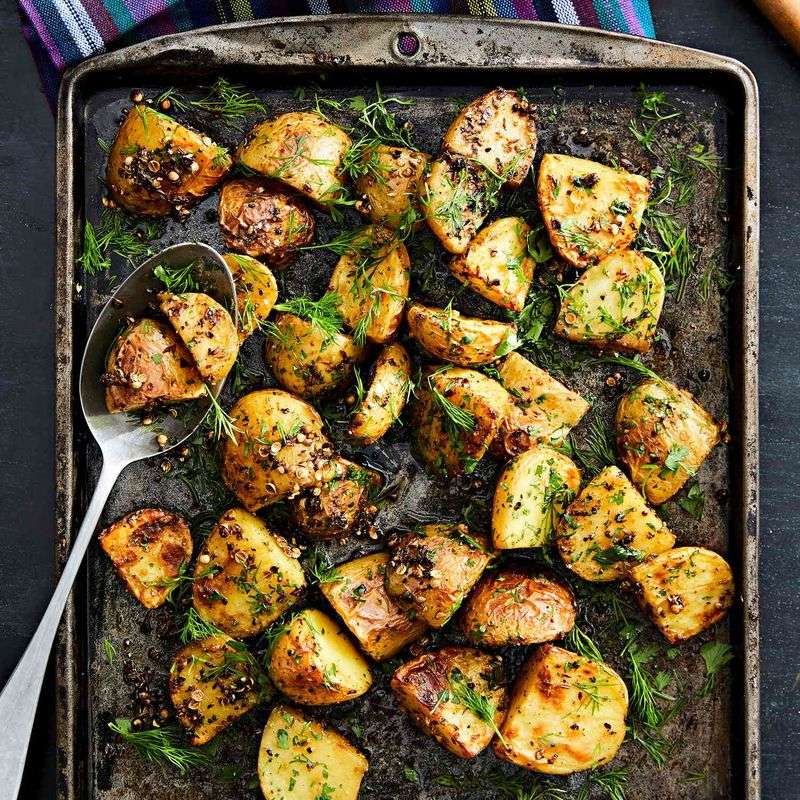
Putting potatoes into cold ovens or unheated pans leads to uneven cooking and poor texture. Cold surfaces cause potatoes to stick and cook unevenly, with some parts overcooked while others remain undercooked.
Always preheat your oven to the correct temperature before adding potatoes. For stovetop cooking, heat the pan until it’s hot enough that water droplets sizzle and evaporate quickly. Hot surfaces immediately begin browning the potato exterior while cooking the interior evenly. This technique helps develop better flavors and textures, whether you’re roasting in the oven or pan-frying on the stovetop for many potato dishes
9. Peeling Before Cooking
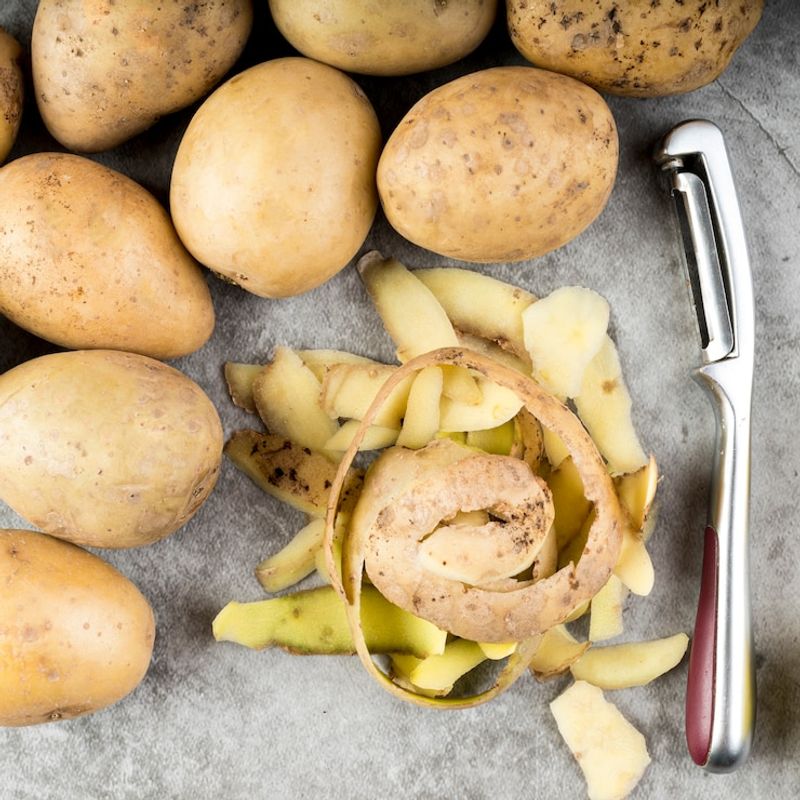
Potato skins contain valuable nutrients, fiber, and flavor that enhance the final dish. Many people automatically peel potatoes, but the skin often adds desirable texture and taste while providing health benefits. Cooking potatoes with skins on also helps them hold their shape better during boiling or steaming. The skin acts as a natural wrapper that prevents the flesh from breaking apart. If you prefer peeled potatoes, consider cooking them with skins on first, then peeling them while warm. This method retains more nutrients and flavor while still giving you the smooth texture you want for certain recipes like mashed potatoes.
10. Serv Potatoes Hot
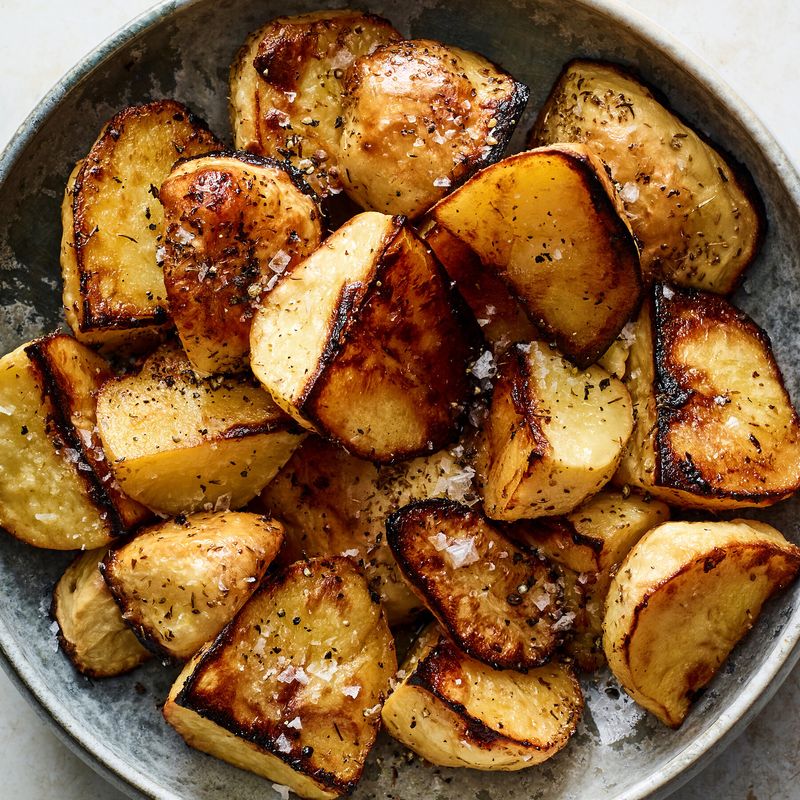
Freshly cooked potatoes benefit from a brief resting period that allows their internal moisture to redistribute evenly throughout the flesh. This short wait improves both texture and flavor development. Hot potatoes continue cooking slightly from residual heat during this period. The starches finish setting up properly, adding a better overall texture that’s less likely to fall apart when served. Let cooked potatoes rest for about five minutes before serving or using them in other preparations. This waiting period also makes them easier to handle safely and allows flavors to settle into a more balanced, satisfying taste that many will enjoy.
